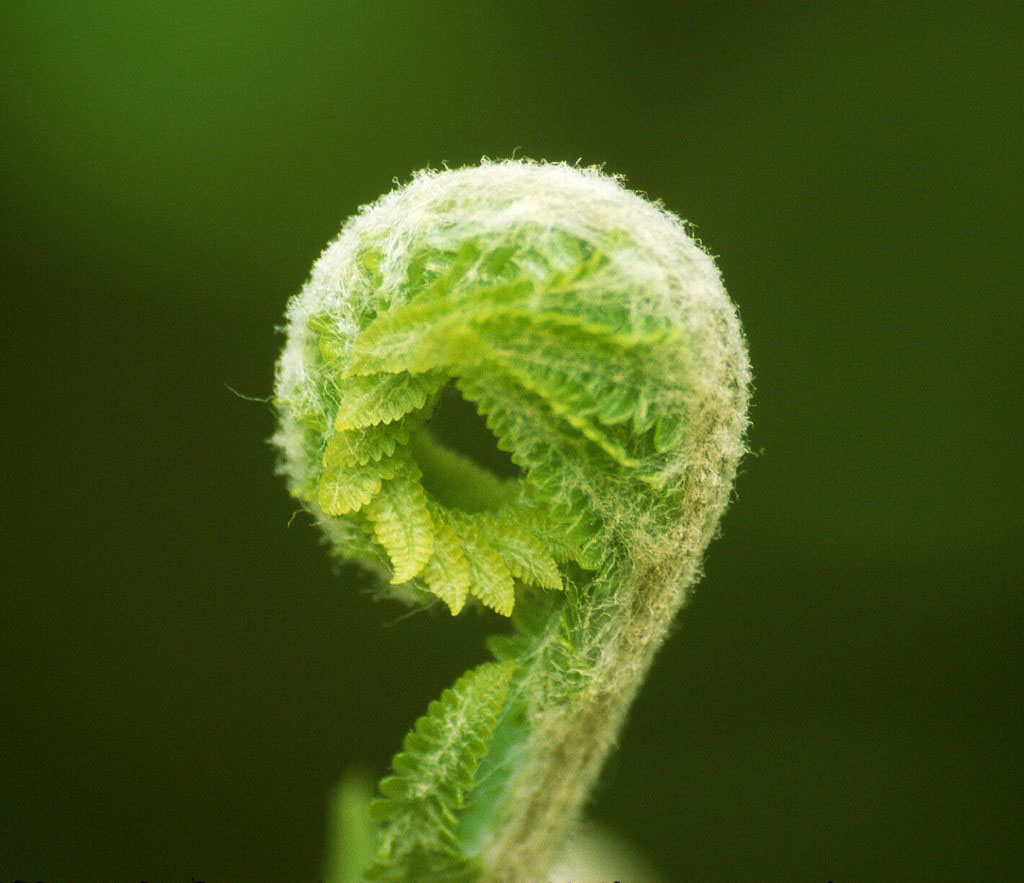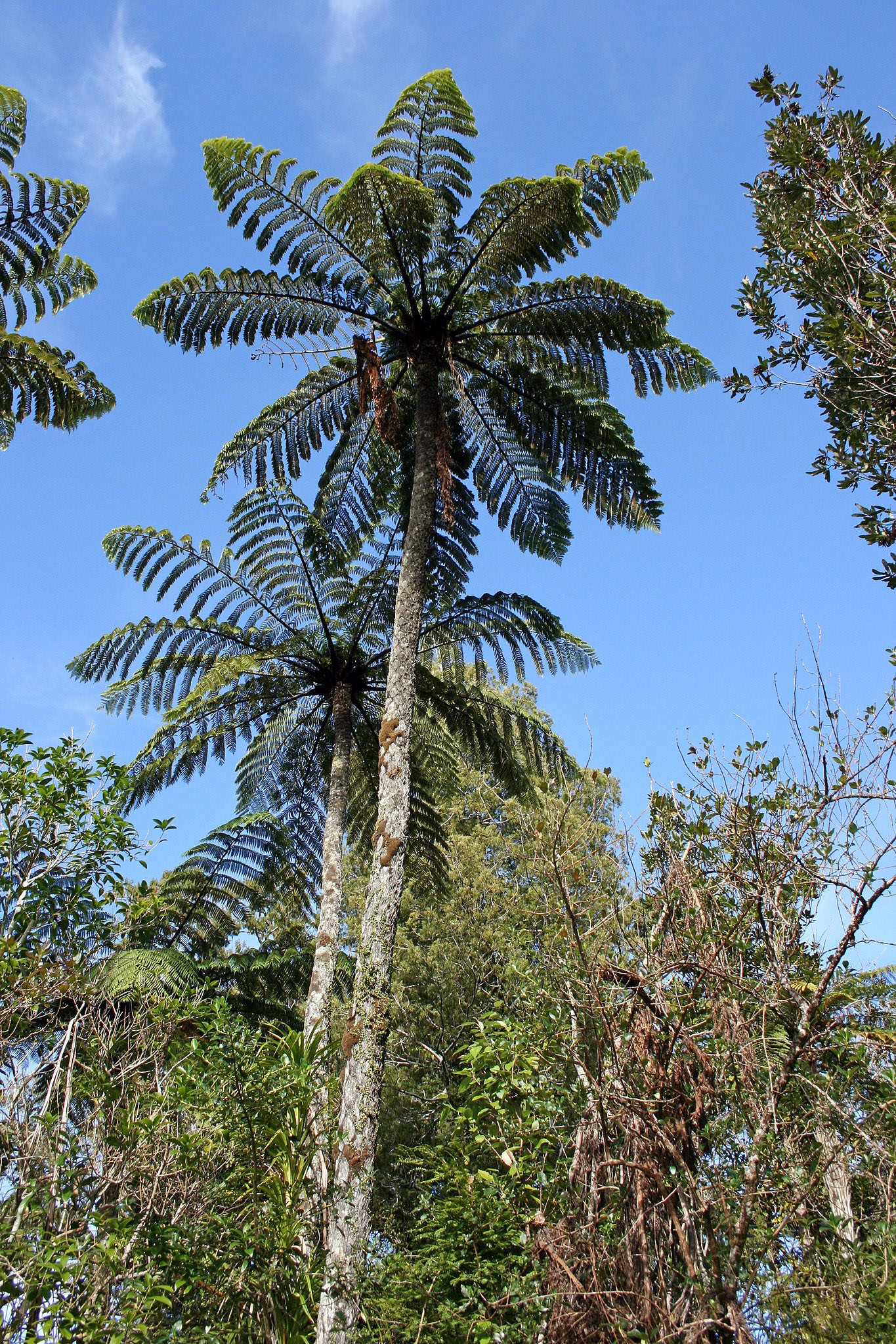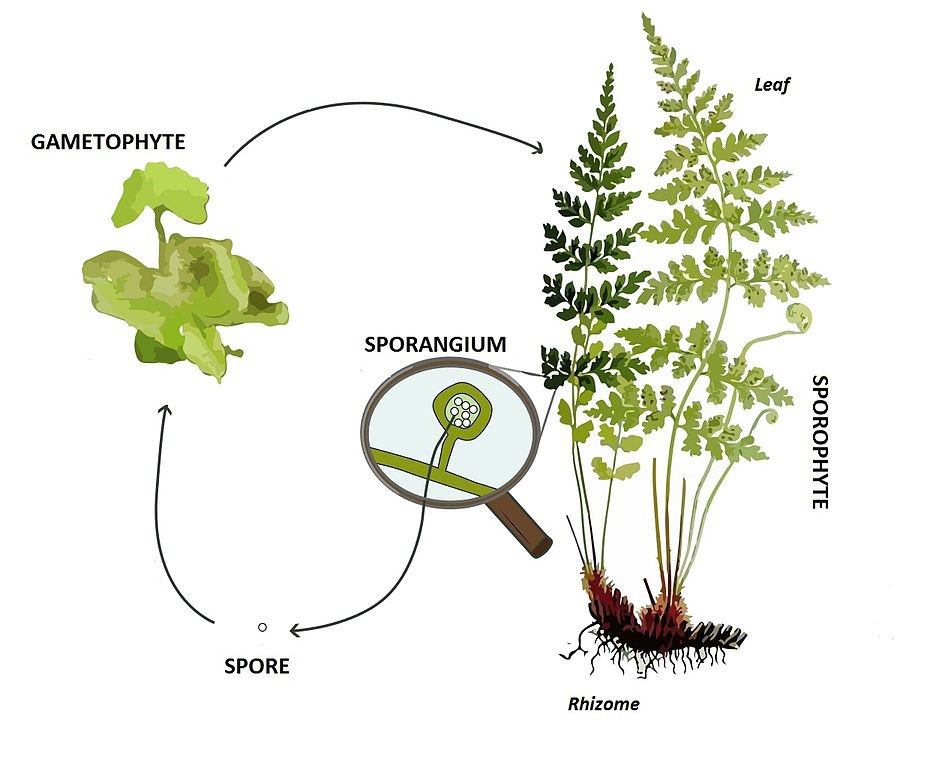
Tiny mosses were the first land plants to evolve on Earth. But the first real plants, the big leafy kind, came on the scene 400 million years ago—200 million years before hardwood trees and flowering plants.
I’m talking about ferns.
They flourished, then and now, through a unique two-stage life cycle.
Mature ferns produce spores that drop to the ground. There they grow into gametophytes, which don’t look anything like the mature example. In some species, they grow underground.
The gametophytes produce eggs and sperm—which require water to swim and find other eggs. Once they unite, they grow into a fern.
Most fern species produce rhizomes, or root runners, which send up the fronds. When fronds die from cold or age, the rhizomes produce more.
Early ferns soon developed many forms. They grew on dry land, in swamps, even in water. They were tiny and huge: tree ferns grew woody trunks and reached 25 feet in height.
By 300 million years ago, Earth was covered in forests of ferns. But a changing climate, and eventual competition from other plants, made many species go extinct.
Still, ferns flourished. Today, they’re the second most diverse type of plant on Earth with more than 10,000 species.
Including one with a surprising behavior—which we’ll talk about on another EarthDate.
Background
Synopsis: Nearly 400 million years ago, as the first animals emerged from Devonian seas, ferns also evolved to live on land. Almost three times as old as flowering plants that produce seeds, ferns rely on water to reproduce. Some grow in soil, some are aquatic, and some attach themselves to rocks or plants for structural support, gleaning nutrients and water from the air. Ferns continue to evolve and amaze us.
- Earth’s oldest land plants evolved more than 425 million years ago.
- These tiny mosslike plants lacked vascular systems and leaves, consisting mainly of green stems containing chloroplasts where photosynthesis took place.
- Around 390 million years ago, ferns began evolving to live on land.
- The Devonian Period (419–359 million years ago), known as the “age of fishes,” is characterized by the tremendous diversification of marine life.
- Competition for marine ecological niches pushed tetrapods, the first animals with four appendages, onto land around 375 million years ago.
- By that time, the earliest fernlike plants had already become established on land, showing up between 393–383 million years ago in the Middle Devonian Epoch.
- Middle Devonian plants were only waist high, but taller individuals outcompeted shorter ones for access to sunlight and more effective spore distribution.
- By Late Devonian most plant groups had developed robust root systems to anchor them in place as well as vascular systems to transport water and nutrients within the organism.
- Trees became larger and larger as woody tissues evolved over time, and, by the Late Devonian, tree ferns grew to heights of up to 24 ft (8 m).
- By the end of the Carboniferous Period 300 million years ago, ferns had expanded into multiple terrigenous and freshwater habitats, thriving in the swampy forests of the Northern Hemisphere.
- Coal and natural gas used for heating homes and electricity generation in the mid-continent of the United States and the United Kingdom comes from these fossilized fern forests.
- While most ferns covered the forest floors, some developed the vascular and root systems to grow into tree ferns, while others evolved to live on those trees as epiphytes.

- Epiphytes, sometimes called air plants, derive water for photosynthesis from the air but attach themselves to other plants for structural support.
- These types of plants are common in modern tropical forests. Epiphytes make up 29% of modern ferns.
- They don’t live in soil. They extract essential nutrients from dust in the air and falling debris like leaf litter.
- Epiphytes are not parasitic; they use their hosts for physical support only to get them up higher into the forest canopy.
- 300-million-year-old coal balls from Ohio contain fossils of an epiphyte fern (Botryopteris forensis) anchored into the trunk of a tree fern (Psaronius).
- Many early ferns became extinct as the climate changed in the early Mesozoic.
- Subsequently, major expansions of fern species occurred during both the Cretaceous Period (alongside angiosperms) and the Cenozoic Era.
- After angiosperms (flowering plants), ferns are the most diverse group of vascular plants on Earth today, with 10,500 living species that share some common characteristics.
- Ferns evolved 250 million years before flowering plants developed the capability to produce pollen and package their offspring in seeds around 135 million years ago. We talked about angiosperms in an earlier EarthDate episode (ED-061).
- Ferns have a more primitive two-phase reproductive cycle that relies upon water for reproduction because the second stage involves free-swimming sperm.
- First, spores are released from structures on the bottom of certain leaves, germinating into gametophytes if conditions are right.
- The tiny independent gametes grow and produce both male and female reproductive organs. Some are capable of photosynthesis in this stage, while others rely on fungal symbiosis for nutrition.
- Male gametes produce free-swimming sperm that fertilize female gamete eggs to produce tiny fern plants that grow and eventually subsume the gametophyte tissue.
- Ferns have vascular systems to transport water and nutrients and underground stems called rhizomes that can regrow fronds damaged by drought or frost.
- The new growth of most ferns forms fiddleheads, which are spirals of the fronds that protects the end of the frond as it matures.

- Ferns continue to evolve and amaze us. Learn about cooperative fern colonies in the next EarthDate episode ED280-Ferns Get Social.

